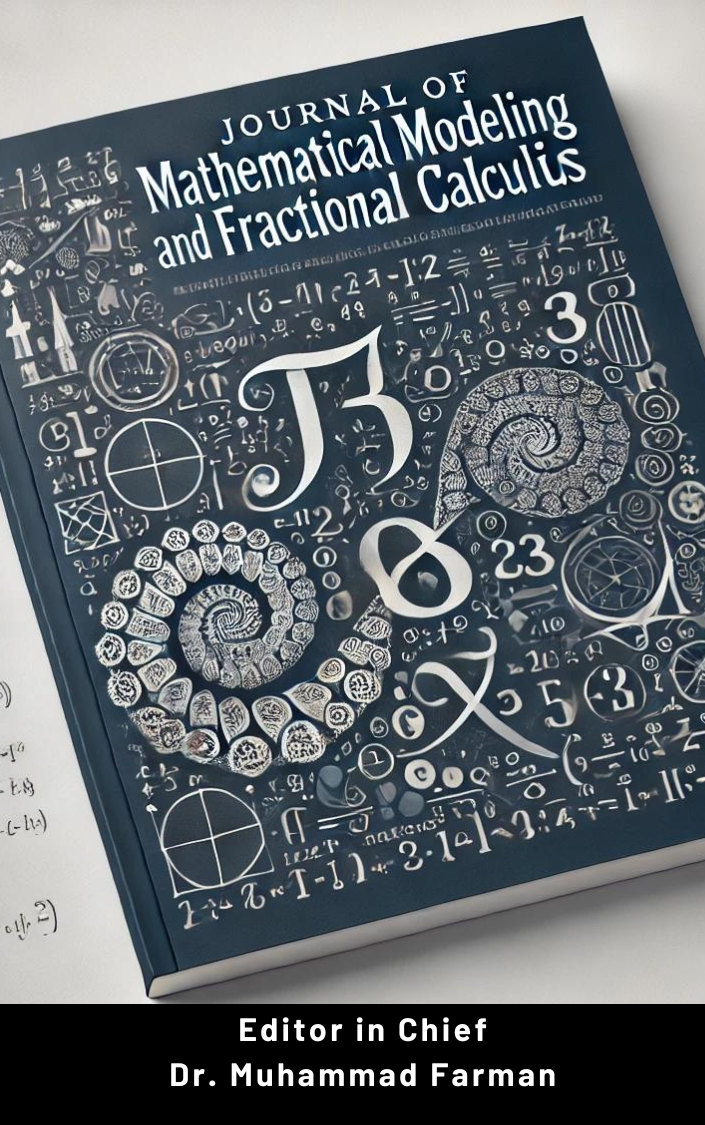Hybrid Fractional Operator for Epidemic Model analysis and application
DOI:
https://doi.org/10.48165/jmmfc.2024.1102Keywords:
Drinking Model, Stability, Uniqueness, Constant proportional Caputo, Eigen functionsAbstract
The Constant proportional Caputo (CPC) fractional derivative has been one of the most use ful operators for modeling non-local behaviors by fractional differential equations. We proposed the CPC operator for the drinking epidemic which is the world wide largest issue nowadays. In compar ison to the integer-order models, the fractional order differential equations models appear to be more compatible with this illness. Qualitative and quantitative analysis for model and scheme are treated. We also present the uniqueness and Ulam-Hyres stability of solutions to a particular class of fractional starting value issues involving the Hilfer proportional fractional derivative using certain well-known theorems from the fixed point theory. The bivariate Mittag-Leffler function that was recently pub lished will be used to solve the drinking pandemic model, we first construct the inverse operator and Laplace transform of the new formulation also eigenfunctions for the proposed scheme. Some impor tant properties were also verified for the Constant proportional Caputo (CPC) fractional derivative on the epidermic model.
References
[1] Kilbas, A. A., Srivastava, H. M., and Trujillo, J. J. (2006). Theory and applications of frac tional differential equations (Vol. 204). elsevier.
[2] Sun, H., Zhang, Y., Baleanu, D., Chen, W., and Chen, Y. (2018). A new collection of real world applications of fractional calculus in science and engineering. Communications in Nonlinear Science and Numerical Simulation, 64, 213-231.
[3] Akgl, A. (2018). A novel method for a fractional derivative with non-local and non-singular kernel. Chaos, Solitons and Fractals, 114, 478-482.
[4] Akgl, E. K. (2019). Solutions of the linear and nonlinear differential equations within the generalized fractional derivatives. Chaos: An Interdisciplinary Journal of Nonlinear Science, 29(2), 023108.
[5] Diethelm, K., and Ford, N. J. (2004). Multi-order fractional differential equations and their numerical solution. Applied Mathematics and Computation, 154(3), 621-640.
[6] Fernandez, A., Baleanu, D., and Fokas, A. S. (2018). Solving PDEs of fractional order using the unified transform method. Applied Mathematics and Computation, 339, 738-749.
[7] Atangana, A., and Baleanu, D. (2016). New fractional derivatives with nonlocal and non-singular kernel: theory and application to heat transfer model. arXiv preprint arXiv:1602.03408.
[8] Kaithuru, P. N., and Stephen, A. (2015). Alcoholism and its impact on work force: A case of Kenya Meteorological Station, Nairobi. Journal of Alcoholism and Drug Dependence.
[9] Huo, H. F., Chen, Y. L., and Xiang, H. (2017). Stability of a binge drinking model with delay. Journal of biological dynamics, 11(1), 210-225.
[10] Grade, M., Beham, A. W., Schler, P., Kneist, W., and Ghadimi, B. M. (2016). Pelvic intra operative neuromonitoring during robotic-assisted low anterior resection for rectal cancer. Journal of Robotic Surgery, 10(2), 157-160.
[11] Mller, D., Koch, R. D., Von Specht, H., Vlker, W., and Mnch, E. M. (1985). Neurophys iologic findings in chronic alcohol abuse. Psychiatrie, Neurologie, und medizinische Psy chologie, 37(3), 129-132.
[12] Xu, C., Farman, M., Hasan, A., Akgl, A., Zakarya, M., Albalawi, W., and Park, C. (2022). Lyapunov Stability and Wave Analysis of Covid-19 Omicron Variant of Real Data with Fractional Operator. Alexandria Engineering Journal.
[13] Caputo, M. (1967). Linear models of dissipation whose Q is almost frequency independentII. Geophysical Journal International, 13(5), 529-539.
[14] Baleanu, D., Diethelm, K., Scalas, E., and Trujillo, J. J. (2012). Fractional calculus: models and numerical methods (Vol. 3). World Scientific.
[15] Anderson, D. R., and Ulness, D. J. (2015). Newly defined conformable derivatives. Adv. Dyn. Syst. Appl, 10(2), 109-137.
[16] Sweilam, N. H., Al-Mekhlafi, S. M., and Baleanu, D. (2021). A hybrid fractional optimal control for a novel Coronavirus (2019-nCov) mathematical model. Journal of advanced re search, 32, 149-160.
[17] Adu, I. K., Osman, M. A. R. E. N., and Yang, C. (2017). Mathematical model of drinking epidemic. Br. J. Math. Computer Sci, 22(5).
[18] Baleanu, D., Fernandez, A., and Akgl, A. (2020). On a fractional operator combining pro portional and classical differintegrals. Mathematics, 8(3), 360.
[19] Samko, S. G., Kilbas, A. A., and Marichev, O. I. (1993). Fractional integrals and derivatives (Vol. 1). Yverdon-les-Bains, Switzerland: Gordon and breach science publishers, Yverdon.
[20] Ahmed, I., Kumam, P., Jarad, F., Borisut, P., and Jirakitpuwapat, W. (2020). On Hilfer generalized proportional fractional derivative. Advances in Difference Equations, 2020(1), 1-18.
[21] Jarad, F., Abdeljawad, T., and Alzabut, J. (2017). Generalized fractional derivatives gen erated by a class of local proportional derivatives. The European Physical Journal Special Topics, 226(16), 3457-3471.
[22] Amin, M., Farman, M., Akgl, A., and Alqahtani, R. T. (2022). Effect of vaccination to control COVID-19 with fractal fractional operator. Alexandria Engineering Journal, 61(5), 3551-3557.
[23] Farman, M., Amin, M., Akgl, A., Ahmad, A., Riaz, M. B., and Ahmad, S. (2022). Fractal fractional operator for COVID-19 (Omicron) variant outbreak with analysis and modeling. Results in Physics, 105630.

